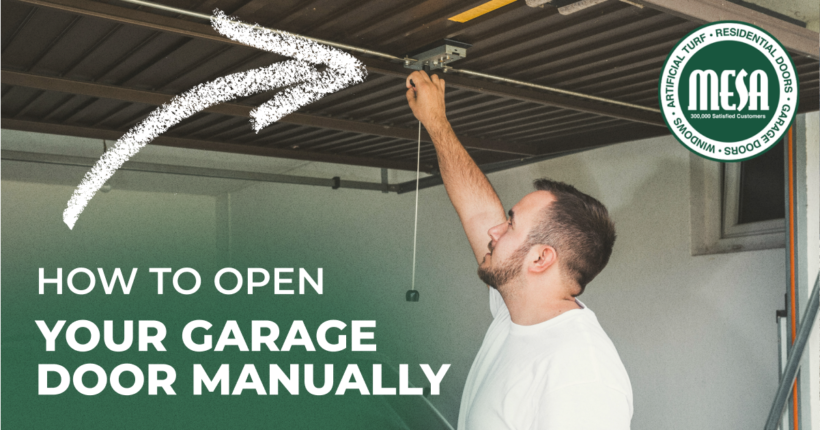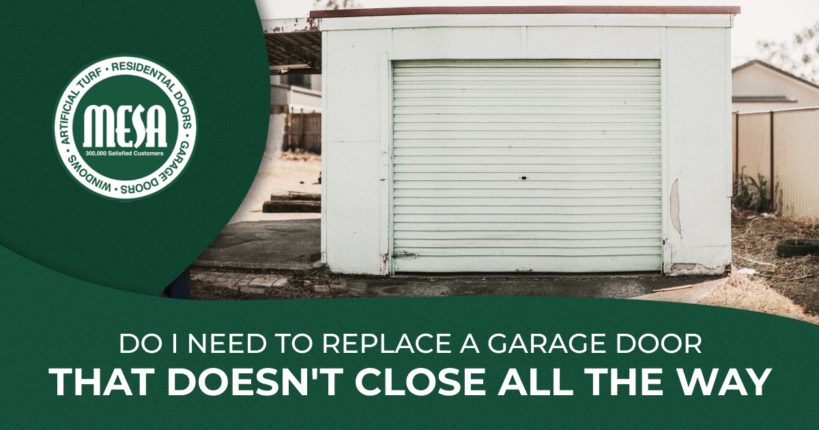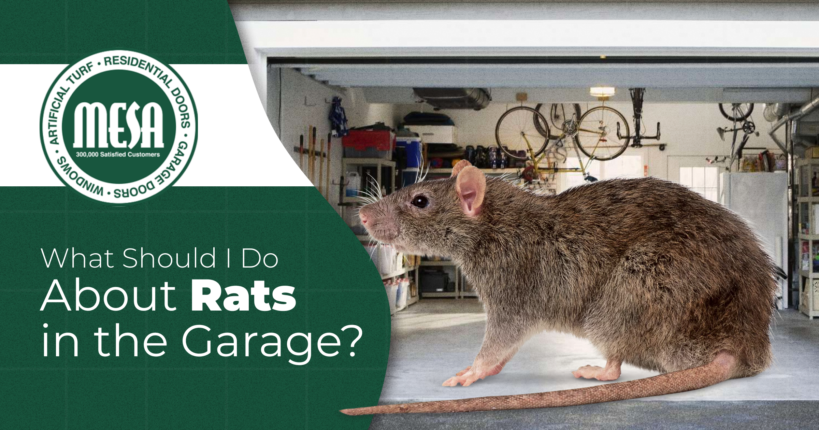How to Open Your Garage Door Manually
If you have an automatic garage door, there are times you may need to open it manually. A power outage can disable the opener. Or, the motor may stop working. Nonetheless, you can still operate your garage door. At Mesa Garage Doors, we can fix any problem with the system. We’ll also tell you how to manually open your garage door, so you have access to your garage, your vehicle, and other contents.
Before using the built-in emergency device, make sure your garage door is closed. Then check the springs. If they’re worn out or broken, you won’t be able to lift the door. Trying to will be extremely dangerous. When it seems safe to proceed, follow these steps to open your garage door manually:
Unplug the Garage Door Opener
Make sure there’s no power to the mechanism. Even if the power is out, unplug the opener because, if the motor engages while the garage door is disconnected, significant damage could occur. Keep the garage door opener unplugged until the garage door is reconnected.
Use the Red Emergency Release Cord
The red rope near your garage door is attached to the trolley. When the door is closed, the rope should be at the front. Pulling firmly on the emergency release cord disconnects the trolley from the garage door opener carriage, which moves the door along the boom attached to the opener. Therefore, pulling the cord prevents the opener from moving the carriage, so the garage door can’t automatically open or close.
Lift the Garage Door
To raise the door, grab it from the bottom with both hands; lift it with your legs and not your back to avoid injury. The door should roll up with little effort. When lifting it, don’t be too forceful or the door can open too quickly, hit the top, and then spring back, hit the ground, and break apart. If the garage door feels too heavy or won’t move, there might be a broken spring, so call a professional immediately.
Close the Garage Door
Once you park your car inside or have left the garage, close the garage door by pulling it down, making sure it doesn’t slam against the ground. Closing it is strongly recommended. An open garage door is a security risk as it’s an easy access point for burglars. Safety is another concern. A strong wind can pull it down hard enough to cause damage and injure people nearby.
Reconnect the Garage Door Opener
Now that you understand how to open your garage door manually, here’s how to reconnect it. Once the power is restored or the issue is resolved, reconnect the trolley, enter the garage, and fully close the garage door. Then pull the emergency release cord down and toward the garage door opener (or, you may have to reach up and pull a lever atop the cord).
To reconnect the trolley, activate the garage door opener and let the trolley and carriage run a complete cycle. Both mechanisms will reconnect when they pass one another. You’ll hear a loud click when this happens. If the system still hasn’t reconnected, manually lift the door about one foot until you hear a click.
To ensure the garage door is connected, use the remote control to open and close it.
Contact Mesa Garage Doors
Knowing how to open your garage door manually can help in a few situations. In some cases, your garage door may need to be repaired. Mesa Garage Doors fixes all types and brands of residential garage doors in Southern California. We also specialize in installation, replacement, and maintenance. To request a repair or schedule a free estimate, contact us online or call (714) 586-8943.





